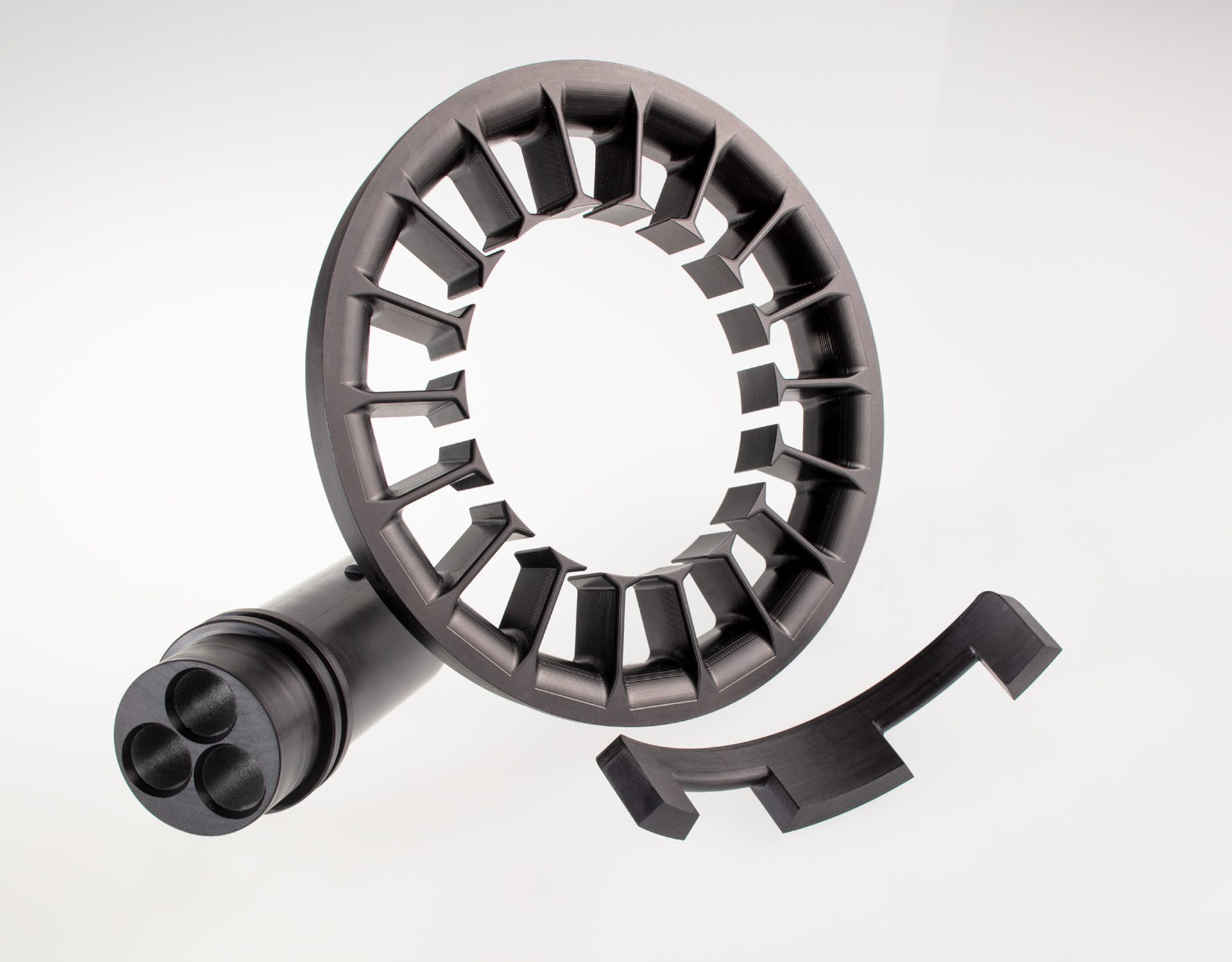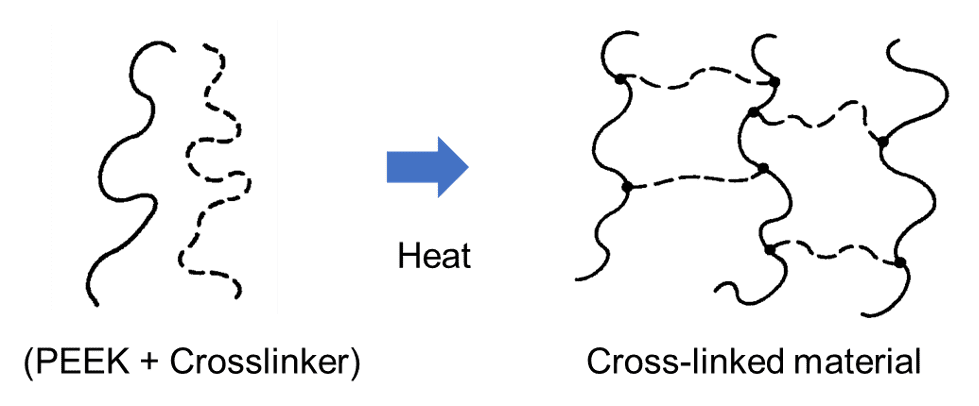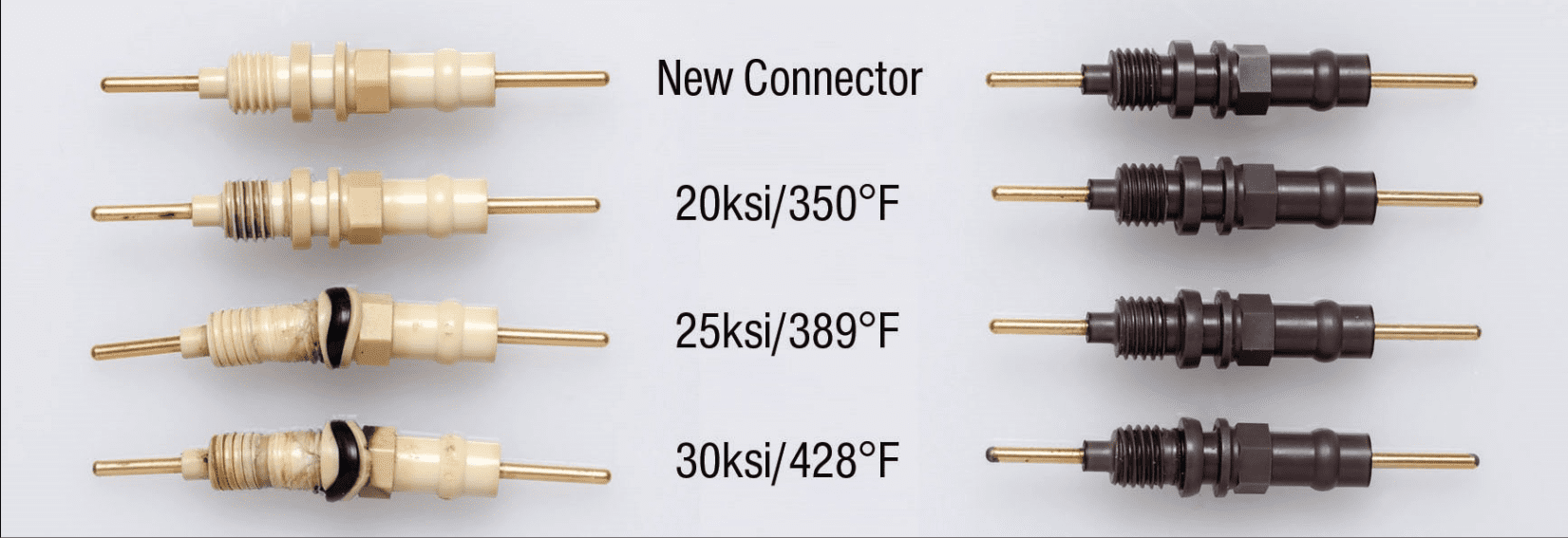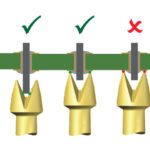Connector Materials for Extreme Conditions
When failure is especially costly, operations demand high reliability. Designers, engineers, and suppliers are always on the search for materials that perform well under extreme conditions.

Many applications subject connectors to very high pressures and high temperatures while requiring them to maintain functionality and performance for extended periods of time. When failure is especially costly, involving downtime of equipment and personnel, operations demand high reliability. Designers, engineers, and suppliers are always on the search for connector materials that perform well under these extreme conditions.
What does withstanding high temperatures entail?
High temperatures can result in an increase in plastic strain over time. This is a particular concern in the high-pressure, high-temperature (HPHT) environment of oil & gas wells. Today’s wells are deeper, with increasing temperatures and pressures at these greater depths. In such a setting, the long-term effect of high temperature on the mechanical properties of the materials is a vital consideration.
The electronic equipment used in downhole operations does more than drill holes in the Earth; it collects and transmits vast amounts of data, which requires connectors that will withstand this extreme harsh environment. Two important considerations when selecting materials for these rugged systems are creep and stress relaxation.
“When plastics are loaded at high temperatures, especially at or above their glass transition temperature, they tend to lose some of their strength over time. This means at the same loading the parts might deform more over time, more than one might predict from a short-term stress strain curve. This is called creep. Stress relaxation refers to the tendency of a material to relax under load and thus deform over time, to a greater degree than predicted from a short-term test. This could result in a loss of sealing force over time,” said Kerry Drake, thermoplastics technology manager at Greene Tweed. For optimal performance, choose materials which are more creep-resistant, or have lower stress relaxation.
The right material for artificial lift operations
In the oil and gas industry, “artificial lift” refers to the technologies, such as tubing pumps, gas lifts, or electrically powered pumps that increase the flow of liquids within a production well and help improve the flow rate in a reservoir when the pressure cannot lift fluids to the surface. Artificial lift can generate flow where there is none or increase the flow so that a well produces at a higher rate. Electric submersible pumps (ESPs) are a reliable method of creating artificial lift. The pumps, and all their components, must stand up to high temperatures, pressure, fluid corrosion, and shock and vibration.
Electrical thermal insulators protect the downhole electrical connectors and feedthroughs that transmit data in HPHT wells. Maintaining a continuous connection for signal and power to surface equipment keeps well operations running smoothly and prevents costly downtime.
PEEK (polyether ether ketone) is often used as insulation material and for the body of electrical connectors in oilfield applications, as well as for sensor housings in demanding environments such as aircraft engines, and various sealing system components. This high-performance engineering thermoplastic minimizes thermal expansion, provides chemical resistance, and promotes effective sealing. Similarly, PEK (polyether ketone) exhibits high thermal dimensional stability, low flammability, outstanding chemical resistance, and excellent mechanical properties over a wide temperature range. PEK’s mechanical and physical properties remain constant at temperatures up to 30 °C higher than PEEK.
However, for some applications, this level of performance is required at exceptionally high temperatures that are well above the glass transition temperatures of both PEEK and PEK.
“Our customer had a need in artificial lift for electrical insulator custom complex parts that could be used in their downhole drilling tools rated for 260 °C to 300 °C. There is also presence of sour gas and material degrading fluids in the well which the material needs to be able to withstand. The insulator parts protect the electrical connectors in the well from the harsh environment. If these parts fail, that would require the tool to be pulled up and increase run time, which can add millions to the total cost of operation,” said Lauren Rainey, strategic market analyst at Greene Tweed.

Arlon 3000XT from Greene Tweed can be injection molded to produce complete parts with complex geometries and very little waste.
“Standard PEEK and PEK soften somewhat at temperatures above 150 °C to 200 °C (glass-transition temperature range) and soften significantly more at temperatures approaching 300 °C (close to the polymer melting point). Even if a material is thermally stable, it won’t work as well for many applications, especially under high pressure, if it gets too soft,” said Drake.
Greene Tweed’s solution is Arlon 3000XT, a cross-linked PEEK that can withstand temperatures ranging from 260 °C to 300 °C (500 °F to 572 °F), environments with high pressure in excess of 35,000 PSI, and harsh media such as hydrogen sulfide, methanol, drilling fluids, and well products. Arlon 3000XT is a highly insulative material that can be used for structural components and bulkhead feedthroughs as well as insulators. The excellent electrical properties, especially at higher temperatures, give it an advantage over standard PEEK for use in connectors. The improved mechanical properties help make it a better seal.

Crosslinking increases its stiffness at higher temperatures. “The polymer chains have chemical bonds tying them together, rather than chain entanglement. That improves chemical resistance and mechanical properties compared to uncrosslinked materials,” Drake said. ”In fact, Arlon 3000XT has even passed the most stringent downhole chemical testing, including ISO-23936/Norsok M-710 (sour aging with gas, high H2S).”

Testing showed that as temperatures and pressures increased, PEK (on the left) exhibited excessive creep/deformed to the point that the O-rings could not be removed. In comparison, Arlon 3000XT maintained dimensional stability, and electrical properties were maintained after the pressure testing. Credit: “New Polymeric Materials Development for Extreme Environments,” presented at Offshore Technology Conference 2014 (OTC25304).
As industries continue to push the limits, finding the best connector materials for extreme conditions becomes a top priority. Many applications face challenges associated with ever higher pressures and temperatures, increased chemical exposure, and other harsh environment conditions. This leads to disruptive new materials and product development, as shown in the preceding example.
Learn more about Greene Tweed and connector materials for extreme conditions.
Like this article? Check out our other articles on High Temperature and Ruggedized, our Materials Market Page, and our 2023 and 2022 Article Archive.
Subscribe to our weekly e-newsletters, follow us on LinkedIn, Twitter, and Facebook, and check out our eBook archives for more applicable, expert-informed connectivity content.
- Sealing Success: Overmolding for More Secure Connections - April 23, 2024
- Medical Cable Assemblies Product Roundup - April 23, 2024
- Mezzanine Connectors Product Roundup - April 16, 2024





